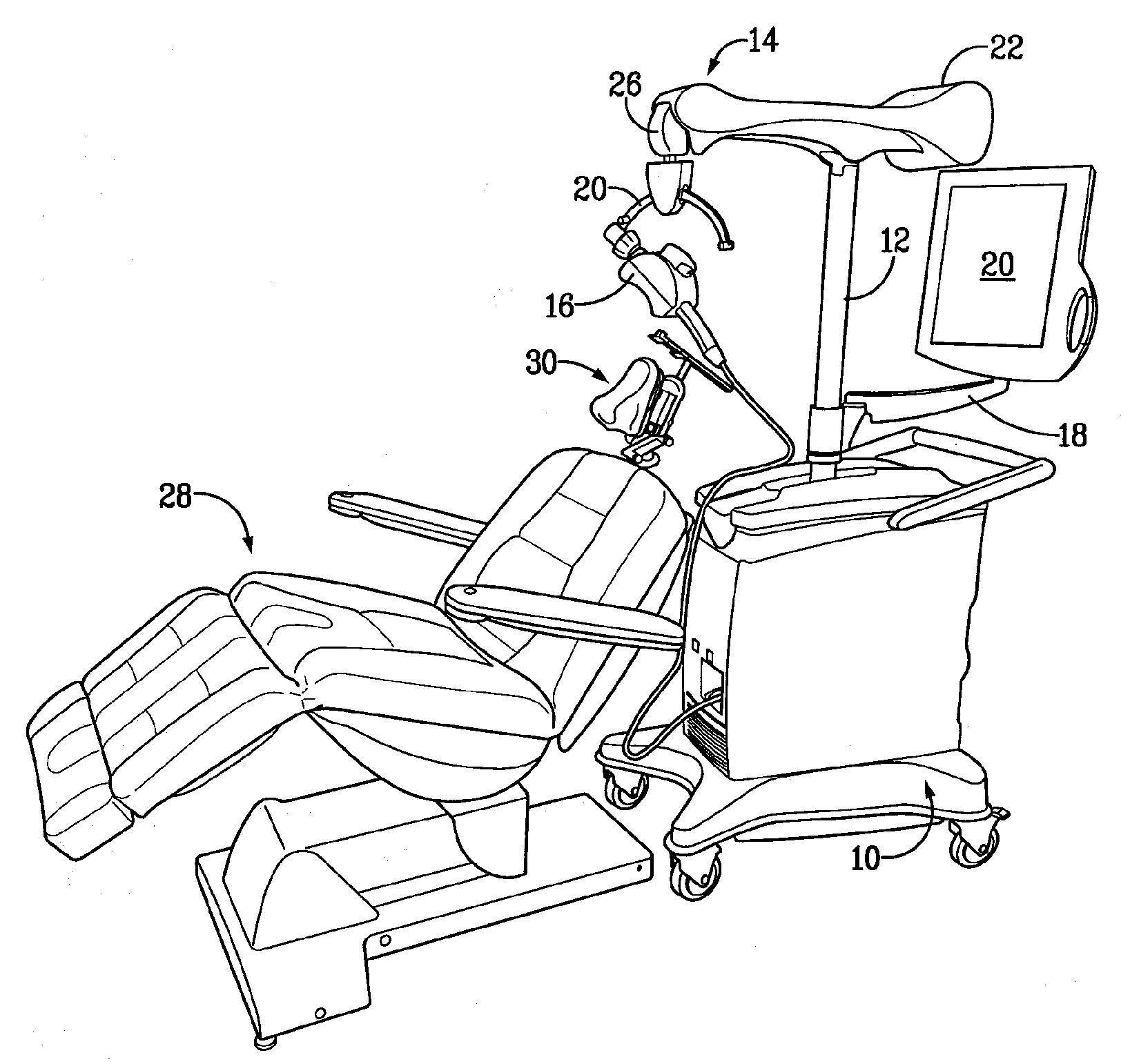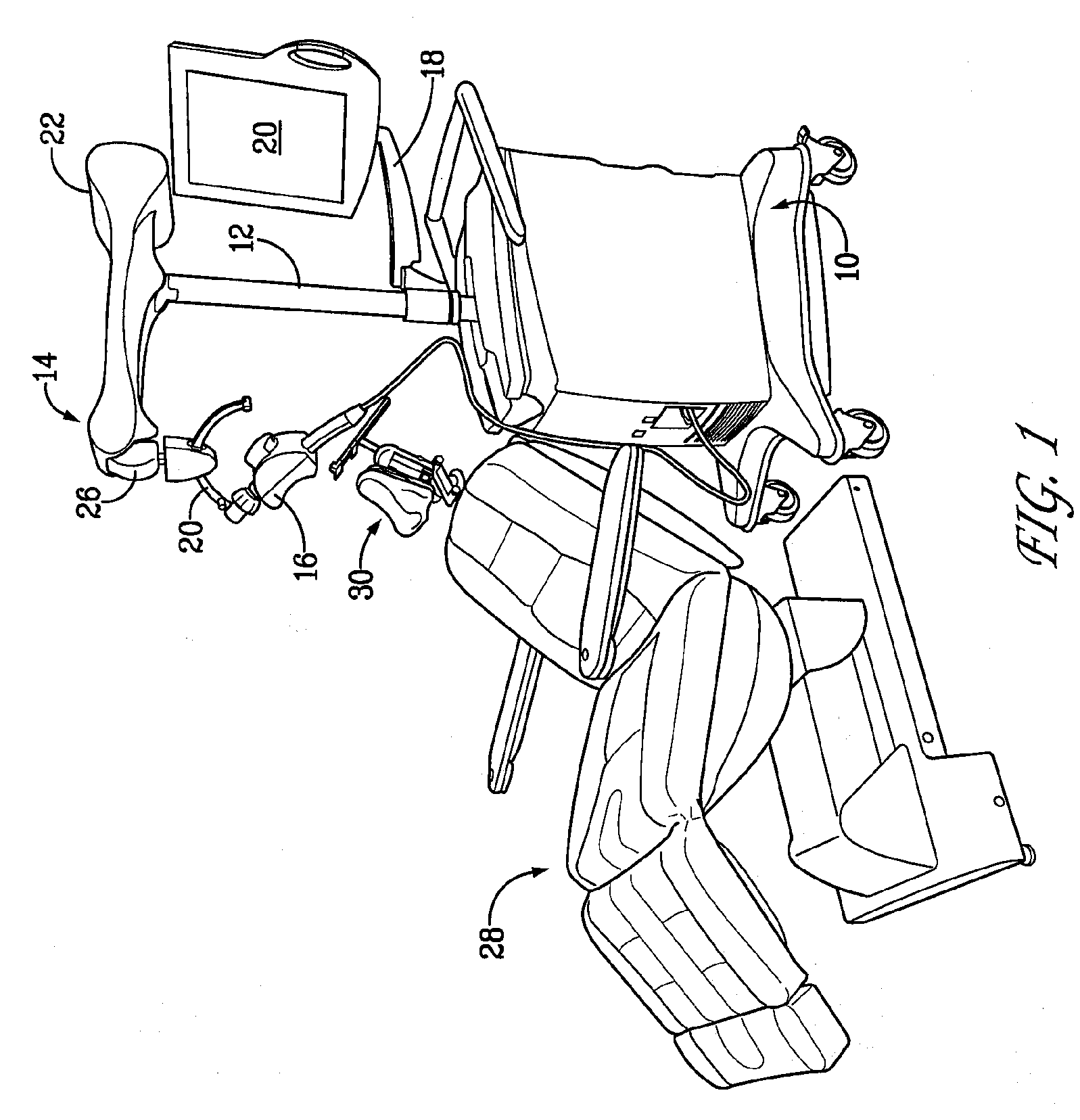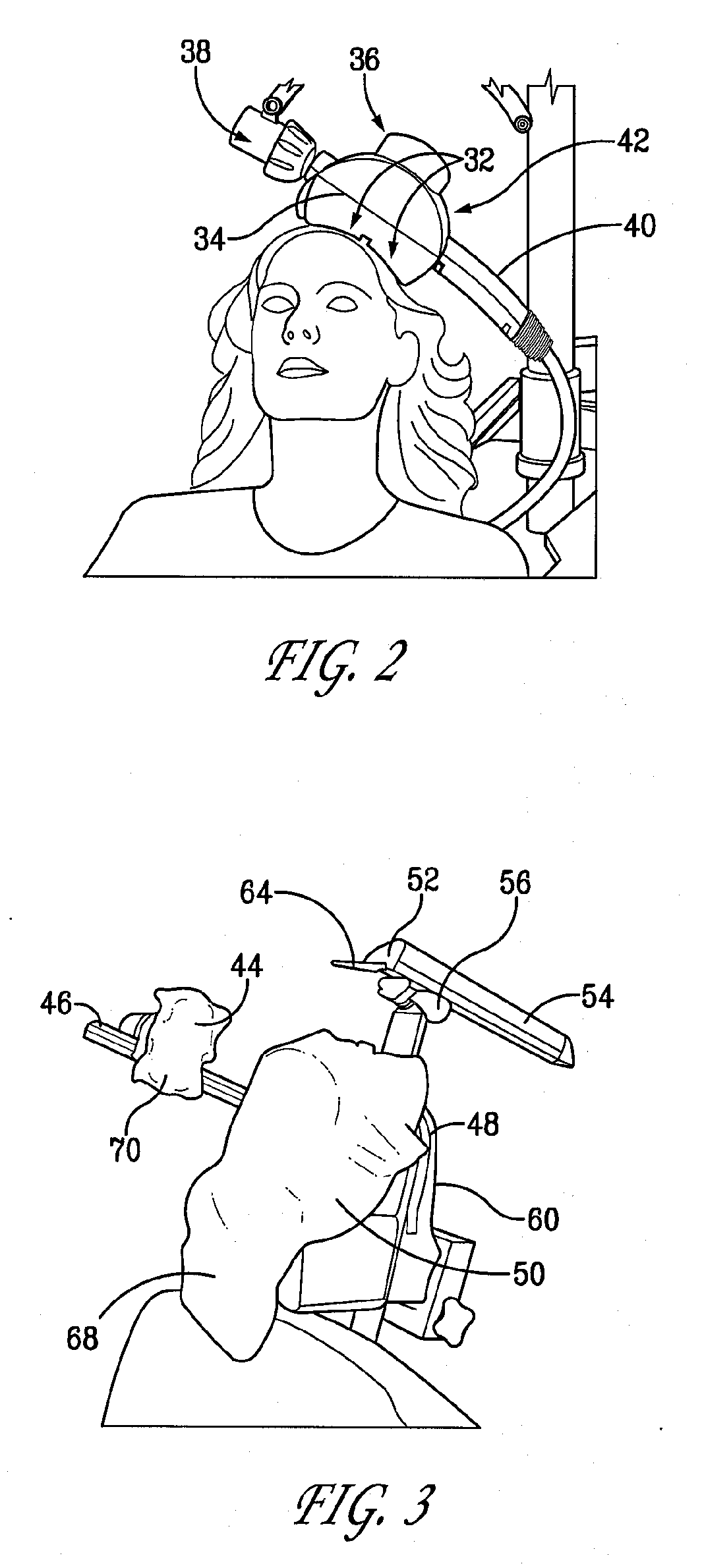Apparatus for coil positioning for tms studies
a technology for precisely positioning and medical instruments, applied in the field of apparatus for precisely positioning medical instruments, can solve the problems of severe clinical limitations of techniques, unfavorable clinical use, and high cost of three-dimensional spatial methods based on imaging modalities,
- Summary
- Abstract
- Description
- Claims
- Application Information
AI Technical Summary
Benefits of technology
Problems solved by technology
Method used
Image
Examples
Embodiment Construction
[0034]A detailed description of an illustrative embodiment of the present invention will now be described with reference to FIGS. 1-16. Although this description provides a detailed example of a possible implementation of the present invention, it should be noted that these details are intended to be exemplary and in no way delimit the scope of the invention.
[0035]A TMS system is a computerized electromechanical instrument that produces and delivers brief duration rapidly alternating, or pulsed, magnetic fields to induce electrical currents directed at localized regions of the cortex. The present invention is designed to position a TMS coil of the TMS system for treatment of central nervous system disease states using TMS therapies. While an exemplary embodiment of the invention is described with respect to the excitatory stimulation of the left prefrontal cortex for the treatment of depression, those skilled in the art will appreciate that the apparatus and techniques of the invent...
PUM
 Login to View More
Login to View More Abstract
Description
Claims
Application Information
 Login to View More
Login to View More - R&D
- Intellectual Property
- Life Sciences
- Materials
- Tech Scout
- Unparalleled Data Quality
- Higher Quality Content
- 60% Fewer Hallucinations
Browse by: Latest US Patents, China's latest patents, Technical Efficacy Thesaurus, Application Domain, Technology Topic, Popular Technical Reports.
© 2025 PatSnap. All rights reserved.Legal|Privacy policy|Modern Slavery Act Transparency Statement|Sitemap|About US| Contact US: help@patsnap.com



